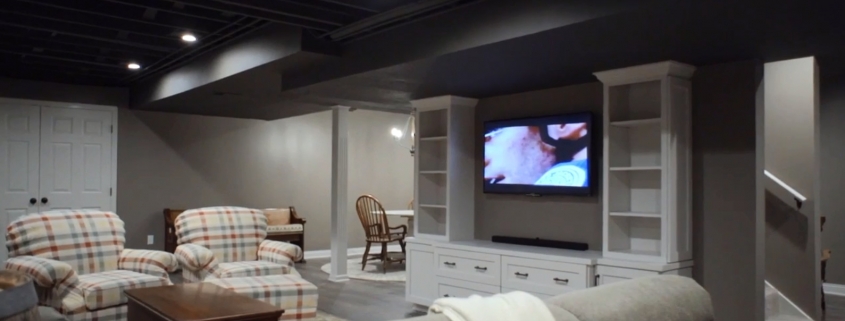Basement Renovation Checklist
If you have long dreamed of having a finished basement, one that you can use as an amusement room, entertainment area or as an extra bedroom, now may be the perfect time to start planning remodelling and renovation. If you are not sure where to start with your project, this checklist can help you. This will guide you through every step of the way, understanding how to pay for the project to give your finishing touches to your finished basement.
Financing Figuration
First, you will want to understand how much you can afford to spend on your project and how you will cover the costs.
Set a budget
There is a wide range when it comes to the cost of remodelling a basement. How much your project will cost counts on the size of your basement and how much you want to make. How much work you do yourself vs what you hire someone else to do also affects the overall cost.
Depending on the purpose of the project, the average cost to complete a basement can range from $ 6,500 to $ 18,500. Remodelling the basement to make it livable and usable can cost an extra $ 10,000 to $ 30,000.
You can use the value of your home as a guide when deciding how much to spend on renovating your basement. Usually, the cost of finishing a basement should not be more than 20% of the value of your home. How long you plan to stay home also affects how much you spend. If you plan to move for a few years, it makes more sense to limit the cost of your project, as you will not have much time to enjoy it and may not reimburse the cost when you sell the house.
How to pay for the renovation
You have several options to cover the costs of your basement project, depending on your current financial situation.
1. Pay in cash
If you have certain savings for large home improvement projects, it may make sense to pay for basement renovation with cash. Using your savings is a good option if the cost of the project will not completely dry out your account and if you do not want to take on extra debt.
2. Use a Personal Loan
Another choice is to apply for a personal loan and use it to cover the cost of renovating your basement. The terms of many personal loans often include fixed payments spread over up to five years.
3. Tap on the equity of your home
Depending on how long you have lived in your home and how much of the mortgage you have paid, you may have created a significant amount of your own capital. Equity is the value of your home less the amount left in the mortgage. If your home is worth $ 250,000 and you have a $ 100,000 mortgage left, you have $ 150,000 worth of equity.
You may be able to borrow against that capital to pay for your basement project. You can get a home equity loan, which is similar to a personal loan once you get the amount into a lump sum and repay it in a few years.
Another way to access your home equity is to apply for HELOC (home equity line of credit). A HELOC is like a credit card for renovating home projects. You can borrow against your equity, repay what you borrowed and then borrow more if needed.
While you may get a lower rate on a home equity loan or HELOC compared to a personal loan, your home is loan collateral, which means you can lose your home if you borrow too much.
Schedule inspections
Once you understand how much you spend and how much you will pay for your project, the next step is to look closely at the basement to see what is going on down there and what it may need.
1. Test for moisture
Moisture can enter the basement in several ways. It can:
- Penetrate from the saturated soil around the house.
- Come from the humid air outside.
- Come out of the humid air inside the house.
- Get into the air leaks.
Damp basements are common, and some estimate that up to 60% of basements have moisture problems.
To keep moisture and water from causing problems in a finished basement, it is important to test for moisture before doing anything. A home inspector can check your basement for signs of moisture problems, such as marks on the walls and skin paint. They can make recommendations for closing the basement or otherwise lowering the humidity level.
2. Check the Foundation
Your home inspector should also look closely at the foundation. They will let you know if they find any cracks or issues that are a concern and can recommend steps to take to fix the problem.
3. Schedule a Radon Test
Radon gas occurs naturally and is colourless and odourless. It often travels from the ground home through cracks in the foundation and can be found at high levels in homes across the US Since radon can cause cancer, ensuring that it does not have high levels in your basement is important before starting a renovation project.
Plan and Hire a Contractor
Once your basement has passed the inspection or you have taken the steps to fix any issues detected by the inspection, the next step is to start planning.
You can finish and renovate your own basement, but you may find that hiring a professional renovation contractor makes the process go more smoothly. When you work with a professional, it is very likely that your project will end quickly and be less stressful for you. A licensed contractor will understand the rules in your area, work with you to get the right permits and help you hire others to handle specialized projects, such as electrical work and plumbing.



